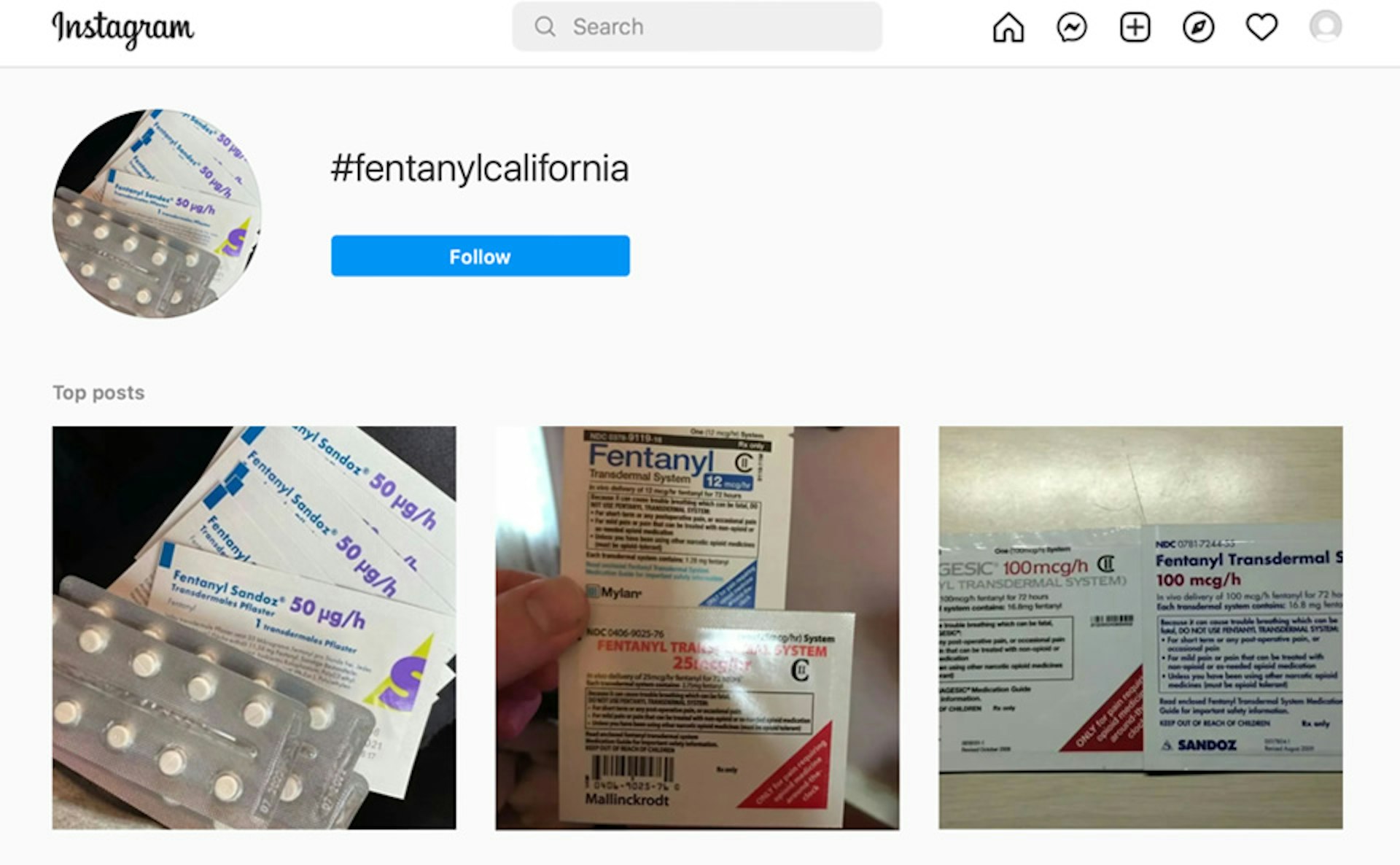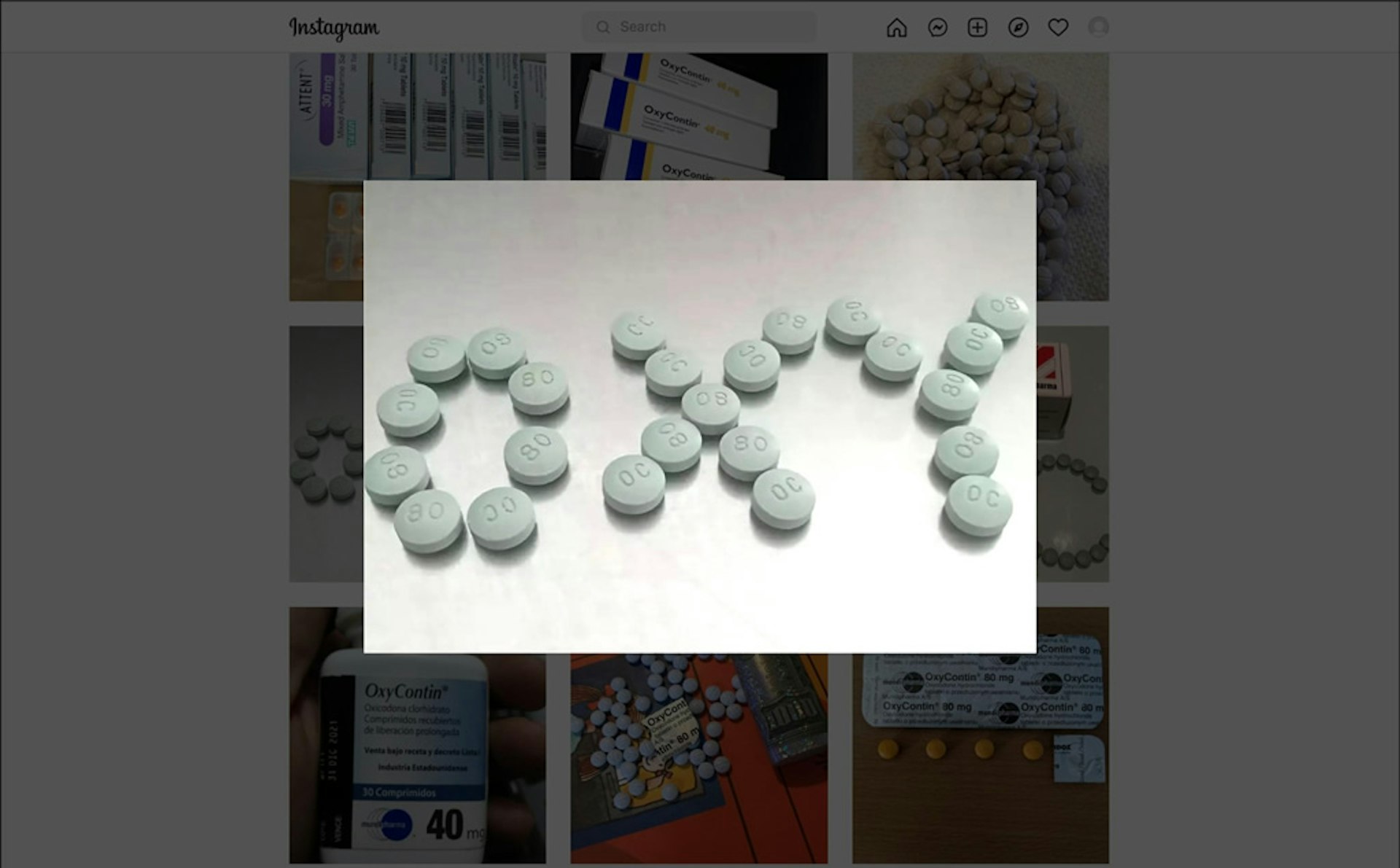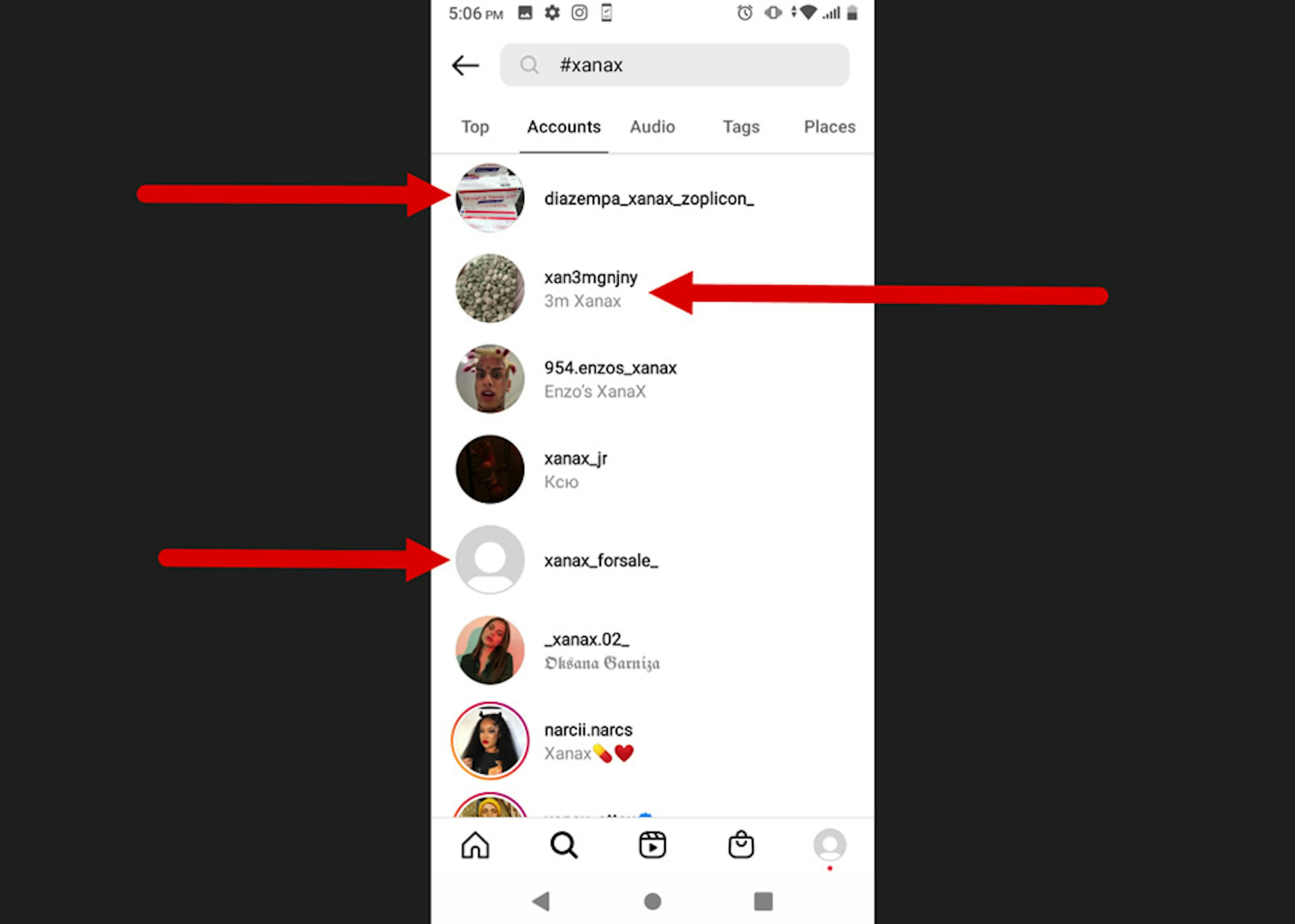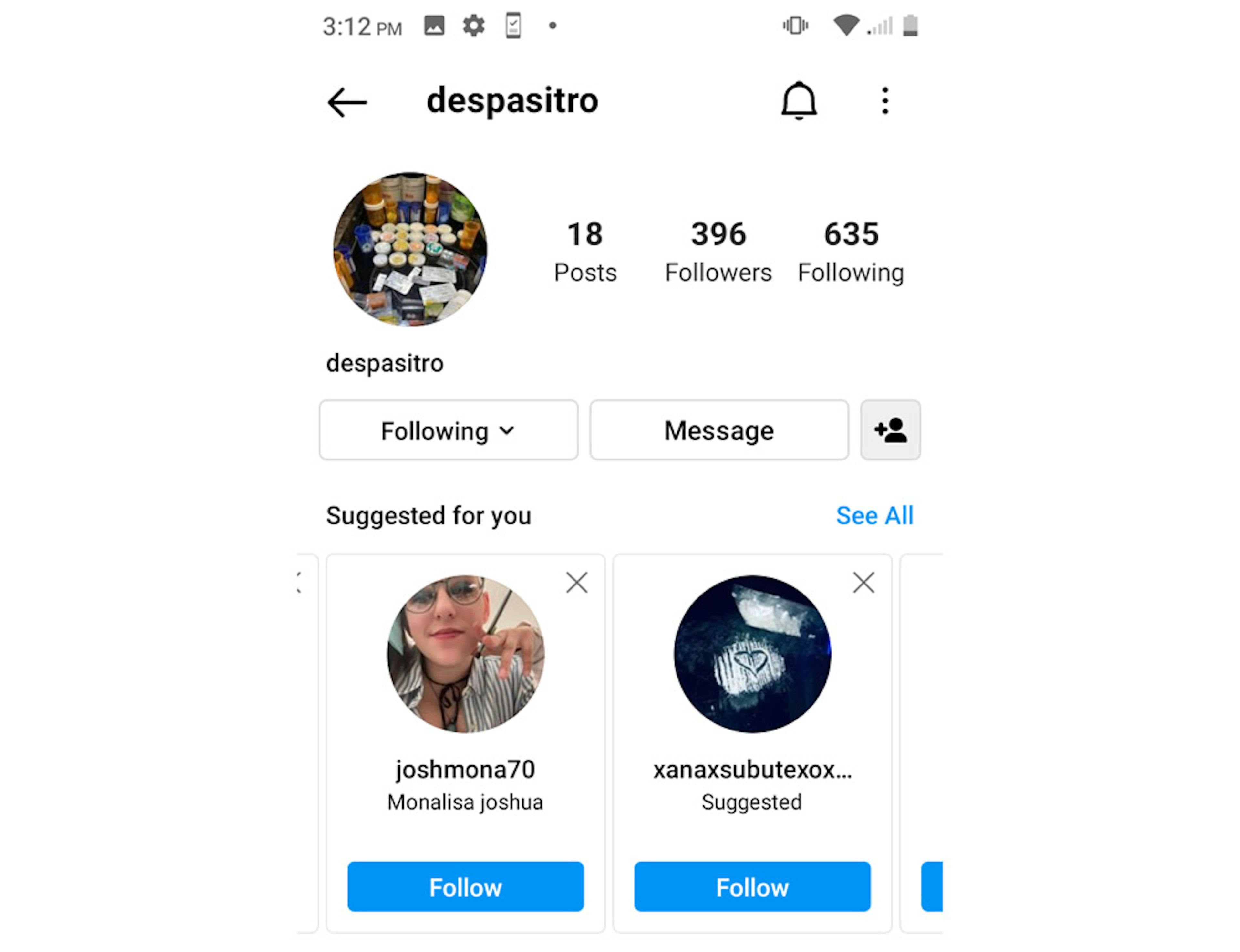In December 2021, a Tech Transparency Project (TTP) investigation found that Instagram allowed teen users as young as 13 to find drugs for sale, ranging from Xanax to opioids to ecstasy, often in just two clicks.
Asked about the report at a Senate hearing, Instagram head Adam Mosseri answered with the company’s usual deflection: “Accounts selling drugs or any other unregulated goods are not allowed on the platform.”
Five months later, TTP did a spot check. Using the hypothetical teen accounts created for the original study, our researchers looked at whether Instagram had taken any steps to restrict minors’ access to drug-selling accounts.
What TTP found is disheartening: Instagram still makes it extremely easy for teens to find illicit drugs for sale—with the platform’s algorithms often leading the way.
The findings raise further doubts about Instagram’s ability to protect young people. Instagram, now part of Meta, has been under growing pressure from lawmakers and parent groups since the Wall Street Journal reported last fall that company officials knew for years that the platform was toxic to teen girls experiencing body image issues. Instagram subsequently put its plans for a dedicated kids app for children under 13 on “pause.”
But as TTP’s latest findings demonstrate, Instagram still has a long way to go to clean up its existing platform. Instagram is rife with accounts that violate its policies against the sale of “non-medical or pharmaceutical drugs”—and teens continue to have full access to them.
Here is a rundown of TTP’s latest research:
- While Instagram has made efforts to block certain drug-related hashtags, it does nothing about searches that don’t contain the hashtag symbol. When our teen user typed phrases like “mdma for sale” into the Instagram search bar, the platform auto-populated results for multiple accounts selling such pills before the user even left the search bar. (MDMA is the party drug ecstasy.) This was true on both the Instagram mobile and web apps. In some cases, simply typing part of a word, such as “oxy,” short for the opioid Oxycontin, surfaced drug-selling accounts.
- Instagram produced a warning on some drug-related searches. When our teen user searched for the word “xanax,” a warning appeared, stating, “This May Be Associated with the Sale of Drugs.” The warning included a button to “Get Help,” which linked to the national helpline page of the Substance Abuse and Mental Health Services Administration website. Despite the warning, however, the search still served up a slew of drug dealing accounts, including some blatantly offering xanax for sale.

- When Instagram blocks drug-related hashtags, it does so inconsistently. For example, when our teen account searched for the hashtag #xanax in the Instagram web app, it got no results at all. But the same #xanax search on the mobile app produced several Xanax sellers under the “Accounts” tab.
- Instagram often blocked a drug-related hashtag while suggesting alternatives to our teen users. On both the mobile and web apps, when a teen user searched for #opiates, Instagram returned no direct results—but suggested other hashtags like #opiatesforsale.
- In another example, the platform blocked the hashtag #fentanyl, but this was easily circumvented by adding another word to the hashtag, like #fentanylcalifornia, which surfaced posts by dealers selling the drug and carried no warning label.

- When our teen user followed a drug dealing account, Instagram often recommended more. For instance, when TTP’s teen user followed an account called @silkroadpharma.cy, an online store that sells everything from PCP to Adderall, Instagram’s “Suggested for You” feature recommended other drug-related accounts, including @calipills_415, which offers “discrete shipping” to all 50 states. That kind of algorithmic amplification occurred repeatedly. After our teen user followed a drug dealing account called @despasitro, Instagram suggested another account called @xanaxsubutexoxycodone, which had a profile photo of a heart traced into white powder next to a baggie.
By slapping warnings on some drug-related terms and hashtags, Instagram is implicitly acknowledging that its platform is used to facilitate drug dealing. But it’s leaving it up to the user to decide whether or not to buy drugs. In this case, that user is a teenager.
Until Instagram removes drug-selling accounts that violate its policies, and stops directing users to such accounts, the platform will continue to pose a threat to vulnerable teens.








